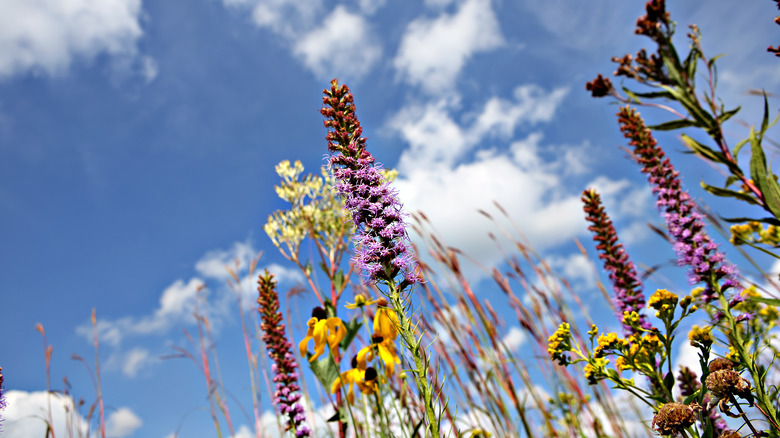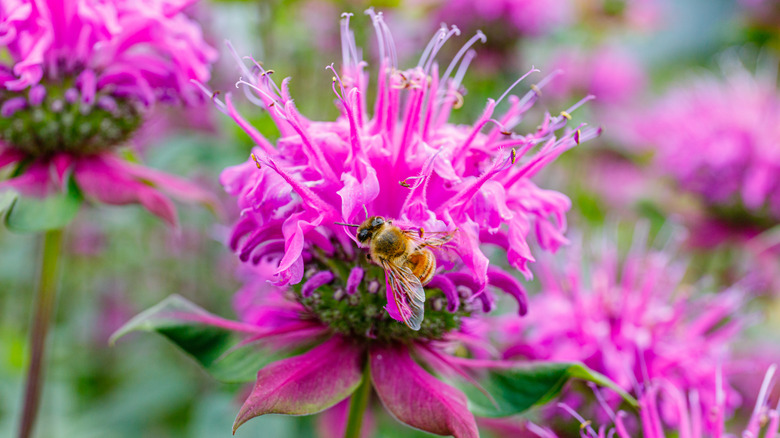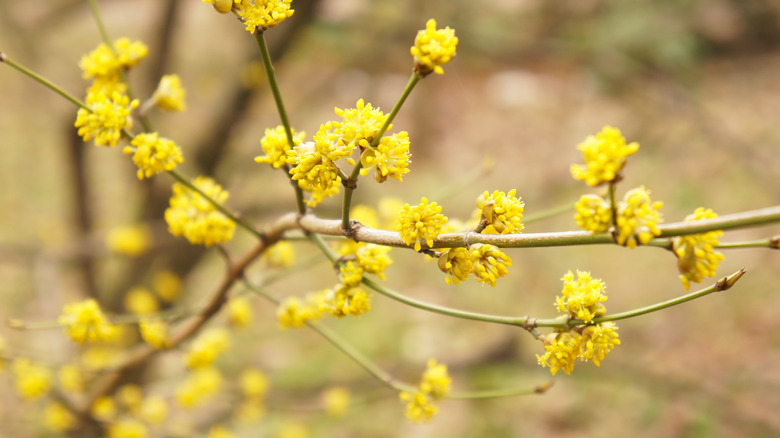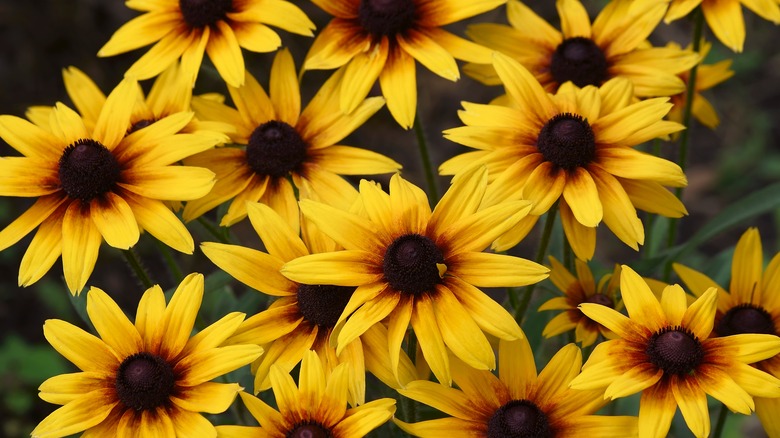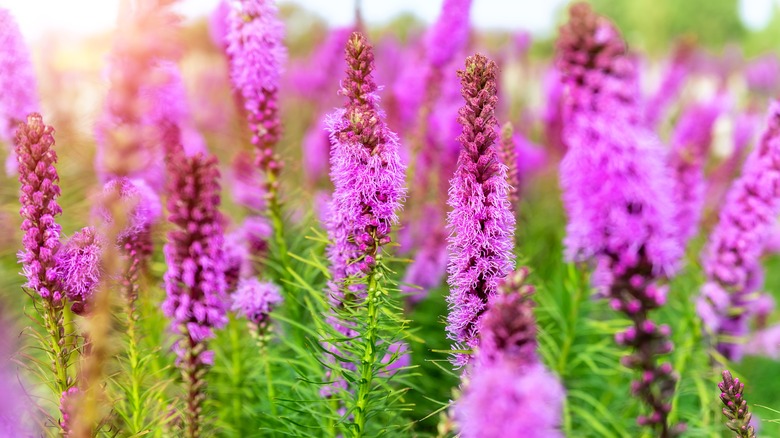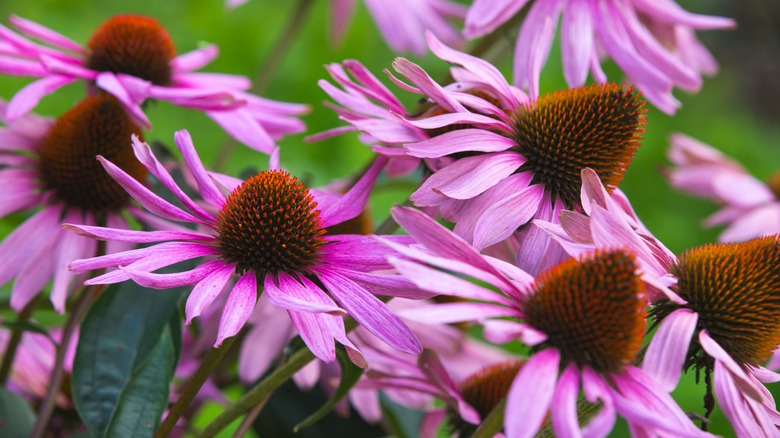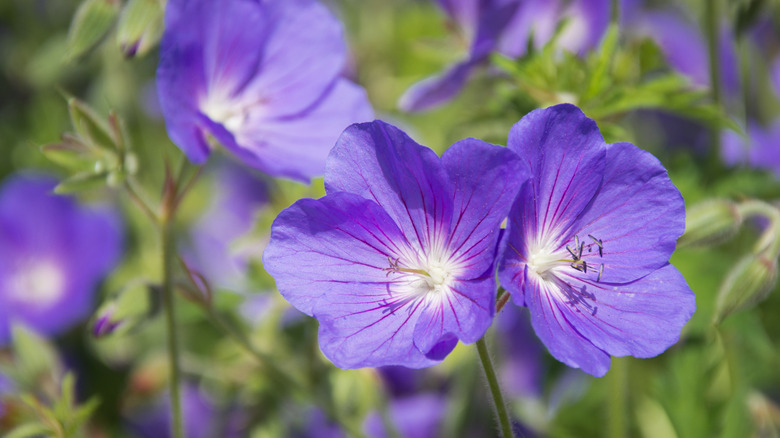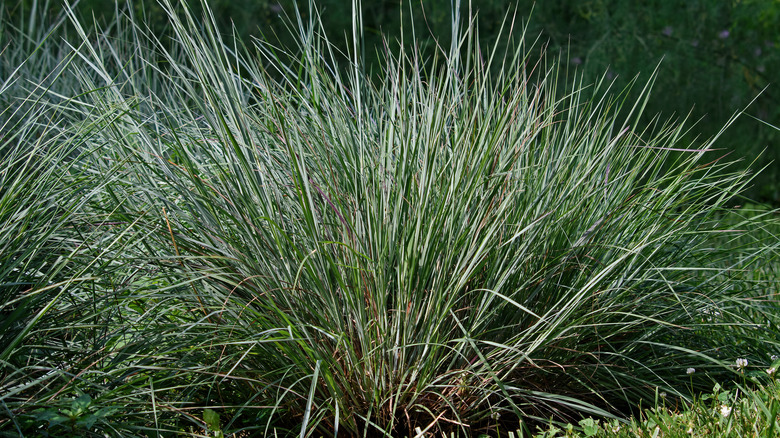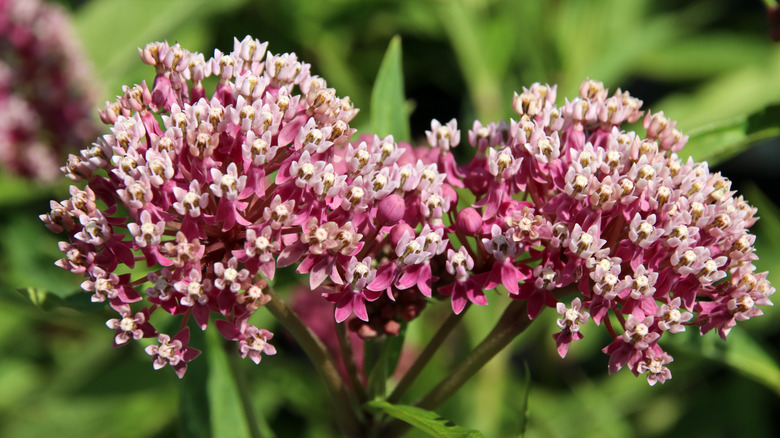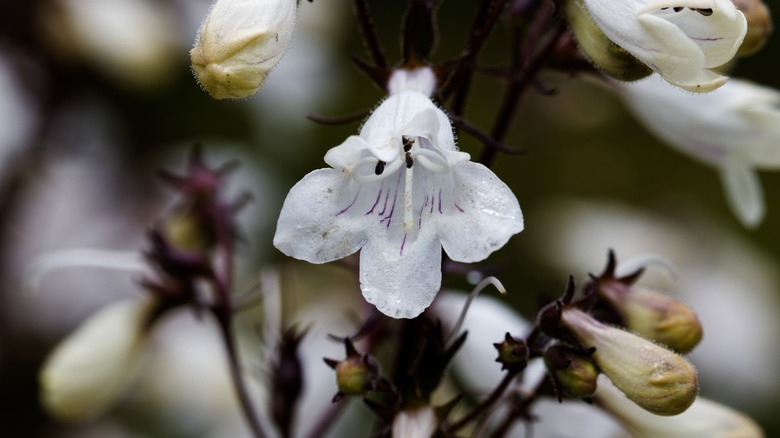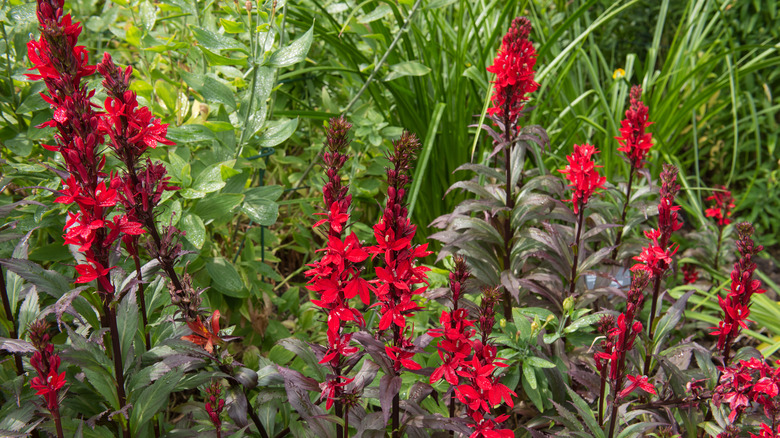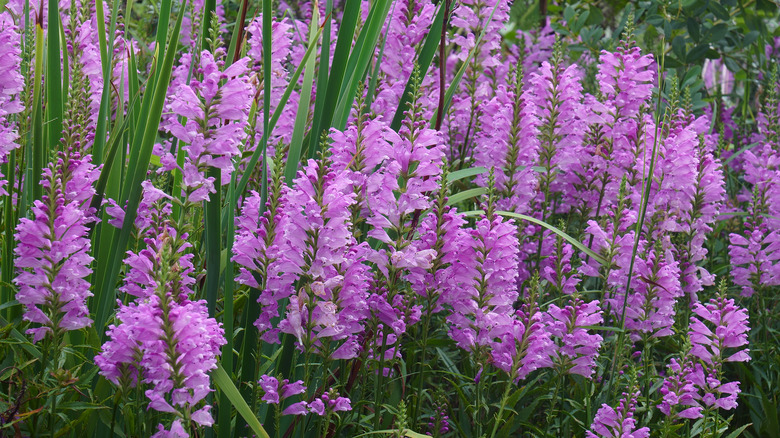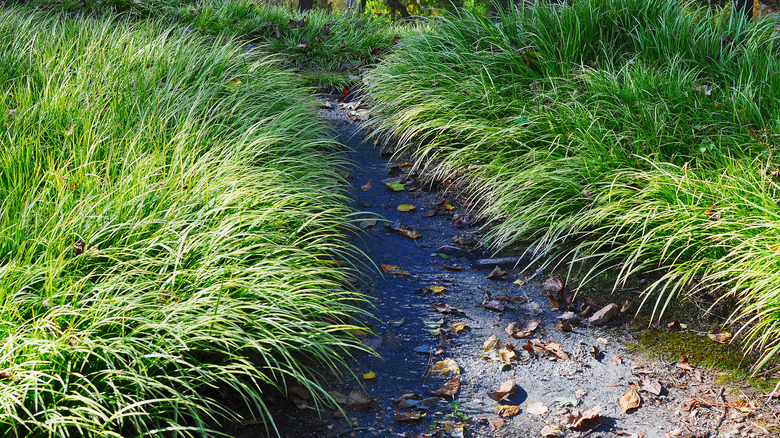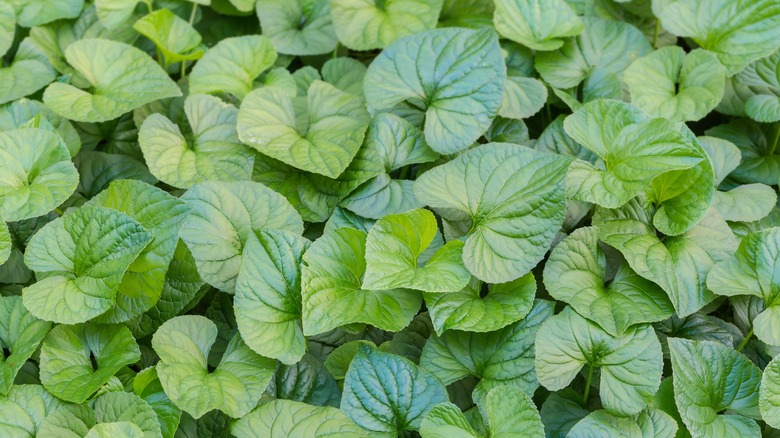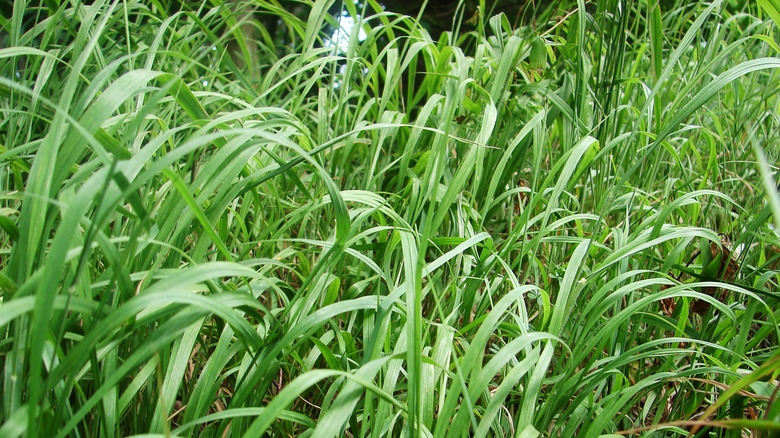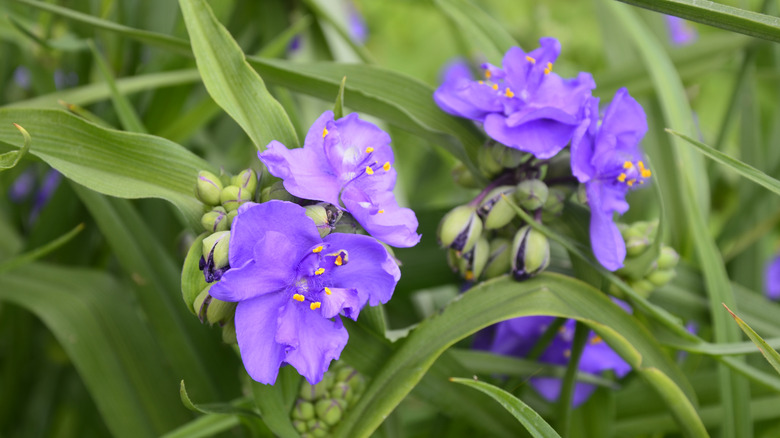15 Best Native Plants To Grow If You Live In The Midwest
The American Midwest is a large region of the United States that encompasses 12 states, including North Dakota, Minnesota, Wisconsin, Michigan, South Dakota, Nebraska, Iowa, Illinois, Indiana, Ohio, Kansas, and Missouri. Many of these states experience four seasons where summers are hot and humid, and winters and cold and snowy. As explained by Mayflower, this part of the country is full of fertile soil that is great for growing crops as well as beautiful flowers. With USDA zones between 3 and 6, locals living in this region can grow numerous plants that they enjoy, and it isn't difficult to find species native to the area.
There are so many good reasons to grow native plants in your midwestern garden; for example, they grow well as they've been adapting to your local environment for hundreds of years. In addition, you won't have to spend much time spraying for pests, watering, or fertilizing, because they are already adept at surviving on their own. Despite what you may think about native flowers, shrubs, and grasses, there is a wide range of options for you to choose from when you live in the Midwest. There are colorful bloomers, tall-growing perennials, and shade-loving foliage-filled plants ready to beautify your garden if you give them a chance.
1. Wild bergamot
Wild bergamot (Monarda fistulosa), which is also referred to as bee balm or eastern bergamot, is a popular midwestern plant that acts as a wildlife food source. It produces pink and purple flowers in the summer that last until fall. According to North Carolina State Extension, the flowers and leaves of the wild bergamot wildflower support native butterflies, hummingbirds, and some bee species.
Bloom Season: Summer and fall
USDA Growing Zone: 3 to 9
Growing Conditions: Full sun to partial shade
Soil Type: Moist and well-draining
Size: 2 to 4 feet tall and 2 to 3 feet wide
2. Spice bush
Spice bushes (Lindera benzoin) are easy-to-grow deciduous shrubs that are native to the central and eastern regions of the United States. They feature fragrant leaves and flowers that smell similar to allspice, as per Missouri Botanical Garden, which has given the bush its common name. In the Midwest, you should plant this tall shrub in a moist and partly shaded area.
Bloom Season: Spring
USDA Growing Zone: 4 to 9
Growing Conditions: Partial shade
Soil Type: Well-draining
Size: 6 to 12 feet tall and wide
3. Black-eyed Susan
Black-eyed Susan flowers (Rudbeckia hirta) are a favored addition to many American pollinator gardens and fall gardens. Not only are they native to most of the central and eastern parts of the United States, but they are also easily maintained in many of the regions on the opposite coastline. This long-bloomer is low-maintenance and easy to grow as long as you do not overwater it, Prairie Nursery warns.
Bloom Season: Summer to fall
USDA Growing Zone: 3 to 10
Growing Conditions: Full sun to partial shade
Soil Type: Well-draining
Size: 1 to 3 feet tall
4. Blazing star
Blazing star (Liatris spp.) is a tall-growing native perennial known for its vertical interest in the garden. The attractive purple flowers of the plants in this genus are recognized for their use as cut flowers by the University of Wisconsin-Madison. In addition, they can be dried or used fresh in several different types of floral arrangements.
Bloom Season: Summer to fall
USDA Growing Zone: 3 to 8
Growing Conditions: Full sun
Soil Type: Rich, evenly moist, and well-draining
Size: 1 to 5 feet tall
5. Purple coneflower
Purple coneflowers (Echinacea purpurea) are among the best plants for midwestern gardens because they bloom for many months straight, and they come back every year. This simple plant can also be found in other variations with white, pink, or red petals. More colors are also available when looking into Echinacea hybrid cultivars, such as the orange Tiki torch coneflower, as described by Clemson Cooperative Extension.
Bloom Season: Mid-summer to late fall
USDA Growing Zone: 3 to 9
Growing Conditions: Full sun to partial shade
Soil Type: Evely moist and well-draining
Size: 4 feet tall and 2 feet wide
6. Wild spotted geranium
Wild spotted geranium (Geranium maculatum), or cranesbill, is a spring-blooming woodland wildflower that can be identified by its pale purple flowers and serrated evergreen leaves. According to Prairie Nursery, wild spotted geranium should be grown in loam or sand that is moderately moist.
Bloom Season: Spring to summer
USDA Growing Zone: 3 to 8
Growing Conditions: Partial to full shade
Soil Type: Evenly moist and well-draining
Size: 1 to 2 feet tall
7. Little bluestem
Little bluestem (Schizachyrium scoparium) is a drought-tolerant grass that works well in a native garden because it is resistant to pests and deer, as per North Carolina State Extension. During warm seasons, this ornamental perennial shows off blue-green hair-like foliage that turns gold to orange in the fall and winter.
Bloom Season: Summer to fall
USDA Growing Zone: 3 to 9
Growing Conditions: Full sun
Soil Type: Well-draining
Size: 2 to 4 feet tall and 1 to 3 feet wide
8. Swamp milkweed
Swamp milkweed (Asclepias incarnata) is another native plant that attracts pollinators to your home garden. The plant, which is a food and nectar source for butterflies, produces small white and pink clusters of flowers blooming throughout the summer, as said by the Missouri Botanical Garden. Swamp milkweed is best planted in a rain garden or near a water source where it can receive plenty of moisture.
Bloom Season: Summer
USDA Growing Zone: 3 to 6
Growing Conditions: Full sun
Soil Type: Average medium to wet soil
Size: 3 to 4 feet tall and 2 to 3 feet wide
9. Tall white beardtongue
As advised by New Moon Nursery, tall white beardtongue (Penstemon digitalis) is best grown in cut flower gardens, naturalized gardens, and meadows. In any of these gardens, you can consider pairing the upright wildflower with blazing star, blue false indigo, or wild bergamot. In addition, the beard tongues' white snapdragon-like blossoms look great with a wide range of other native species.
Bloom Season: Spring and summer
USDA Growing Zone: 3 to 8
Growing Conditions: Full sun to partial shade
Soil Type: Well-draining and loamy
Size: 2 to 4 feet tall and 1 to 2 feet wide
10. Cardinal flower
Cardinal flowers (Lobelia cardinalis) are ornamental garden plants that love moist, swampy growing conditions and companion plantings of other moisture-loving wildflowers. This flower, which normally blooms with bright red blossoms, can also present with white or soft pink flowers in nature, as explained by the University of Wisconsin-Madison.
Bloom Season: Summer
USDA Growing Zone: 3 to 9
Growing Conditions: Full sun to partial shade
Soil Type: Rich and moist
Size: 3 to 4 feet tall and 2 to 3 feet wide
11. Obedient plant
The obedient plant (Physostegia virginiana), which is commonly confused for foxglove or snapdragons, as mentioned by Jersey-Friendly Yards, is a summer-blooming perennial native to more than half of the United States. It has slowly become naturalized to even more states over time, and it is considered to be a resilient and easy-to-grow garden flower.
Bloom Season: Summer
USDA Growing Zone: 6 to 7
Growing Conditions: Full sun to partial shade
Soil Type: Well-draining
Size: 3 to 4 feet tall and 2 to 3 feet wide
12. Prairie dropseed
Prairie dropseed (Sporobolus heterolepis) is a species of ornamental grass that features green-yellow foliage, and it develops coriander-scented panicles in the summer, as told by New Moon Nursery. This cold hardy plant grows well in many distinct conditions such as moist or dry soil and hot or cold temperatures.
Bloom Season: Summer to fall
USDA Growing Zone: 3 to 8
Growing Conditions: Full sun
Soil Type: Average and well-draining
Size: 1 to 2 feet tall and 2 to 3 feet wide
13. Wild ginger
The herbaceous perennial wild ginger (Asarum canadense) is an edible plant that has been used medicinally in the past by some Native American groups, as explained by Cornell Botanic Gardens. The roots of the plant could be used to treat colds and indigestion. However, this ginger species is different from common ginger; when candied, it may serve as a substitute for the real thing, but it is not easily cooked.
Bloom Season: Spring
USDA Growing Zone: 4 to 6
Growing Conditions: Partial to full shade
Soil Type: Rich and evenly moist
Size: 4 to 6 inches tall
14. Big bluestem
Big bluestem (Andropogon gerardii) is another ornamental grass native to the Midwest and prized for its tall, color-changing foliage. As described by Missouri Botanical Garden, the plant once covered much of the prairies in the Midwest; however, today, you can find it in border and accent gardens.
Bloom Season: Spring to fall
USDA Growing Zone: 4 to 9
Growing Conditions: Full sun
Soil Type: Average and well-draining
Size: 4 to 6 feet tall and 2 to 3 feet wide
15. Blue jackets
Blue jackets (Tradescantia ohiensis) are a member of the Dayflower family, which hosts many other weak-stemmed, flowering herbs. This cultivar, in particular, is a deciduous and clumping perennial that blooms throughout the spring and summer. However, as noted by North Carolina State Extension, each flower on this plant will only bloom for one day before dying back.
Bloom Season: Spring and summer
USDA Growing Zone: 4 to 9
Growing Conditions: Full sun
Soil Type: Moist and sandy
Size: Grows up to 3 feet high and 2 feet wide
